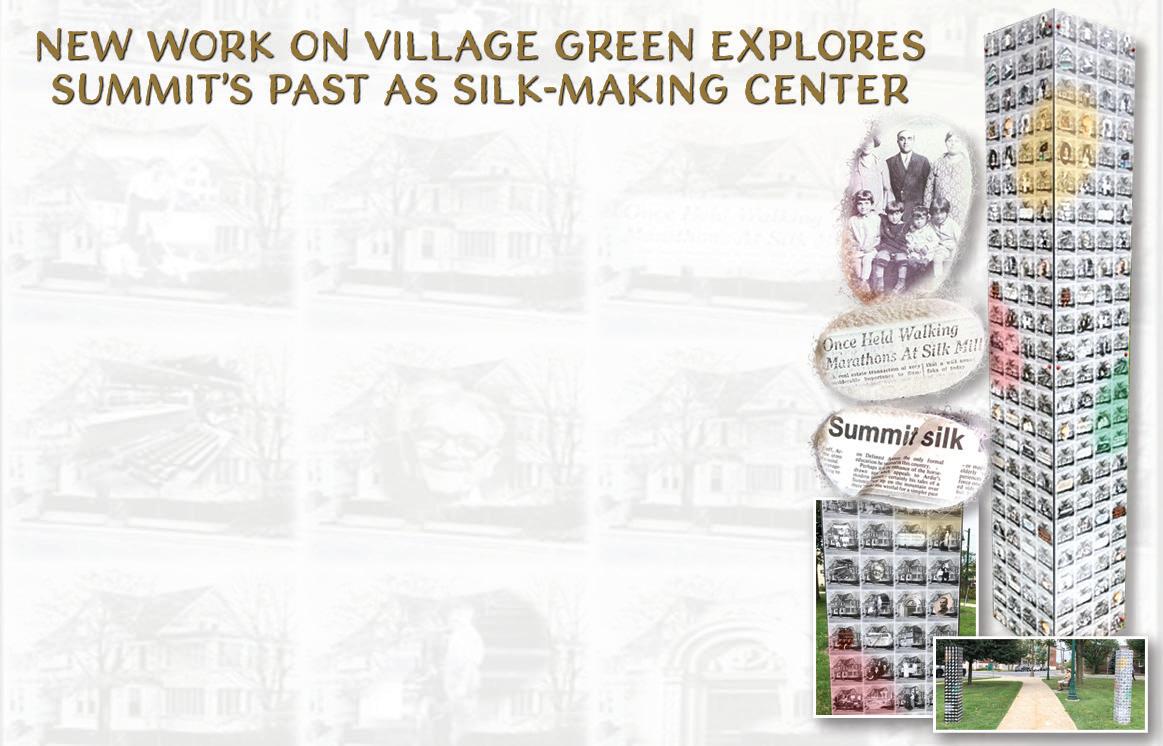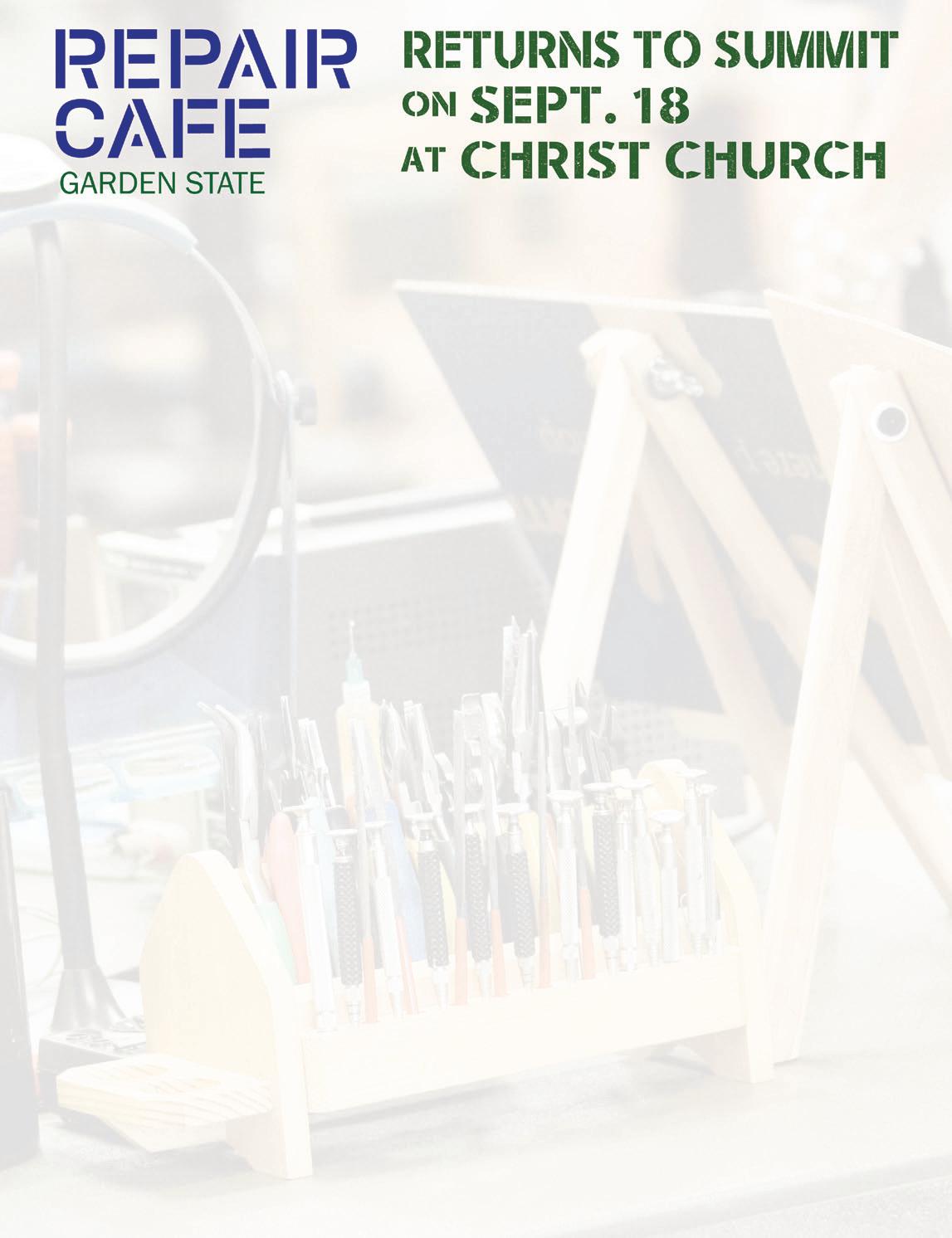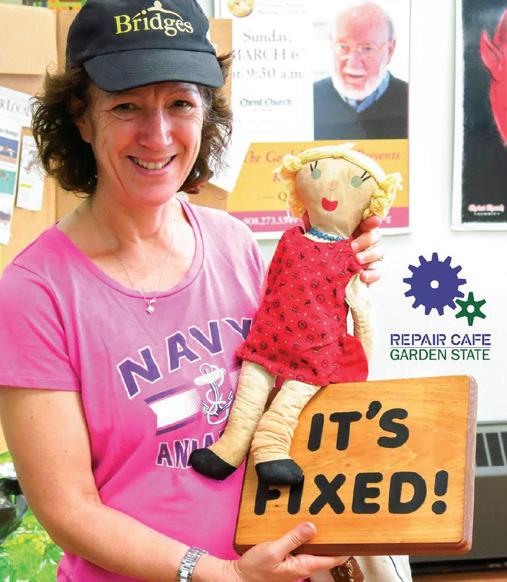
3 minute read
New Village Green Project
Brian Zanasnik is a Union native who has exhibited and performed at the Brooklyn Museum and in Prague, Istanbul and China. But his latest commission is bringing him back to his roots, after he was chosen by Summit Public Art to create a site-specific piece for the Village Green that explores the city’s connections to the silk industry.
The project came about because of Mr. Zanasnik’s friendship with a Summit resident. “I met Estelle Fournier many years ago through the art world,” he said. “For the past couple of years we have been talking about a project for Summit, and we bounced around a lot of ideas. First I was thinking about people born here, such as Meryl Streep.” But that “didn’t feel right,” he recalled. He began doing deeper research into the history of Summit, specifically silk manufacturing and immigrants who came to the city to work in those factories.
Advertisement
He designed columns onto which he transferred images he sourced both online and in person at the archives of the Summit Historical Society, and constructed a digital collage printed on aluminum dibond. The installation took place on a day the mercury reached nearly 100 degrees…and the artist was recovering from a broken wrist.
“I think of the sculptures as monuments,” Mr. Zanasnik said, “but also as monoliths, as if they were futuristic objects that landed in Summit.” The two columns are placed on opposite sides of a sidewalk near the train station, at the end nearest the post office.
“I really like that the sculptures feel very formal and minimal from a distance,” the artist noted, “but then reveal their content up close.” The images include headlines from local newspapers dating to the early 1900s, photos of looms and other silk-making equipment, and images of Summit silk mill workers and their families. Reproduced are also various views of the Summit Antique Center on Morris Avenue, once a settlement house founded by Central Presbyterian Church for the workers and their families, a place where they could go to play sports, learn to speak English and practice skills like sewing.
“I really wanted to draw attention to the diverse history of Summit,” Mr. Zanasnik said, noting that though he now resides in New York, he was born at Overlook. “I thought it was fascinating –- and important – that so many Syrian and Armenian immigrants from the Ottoman Empire came to Summit, bringing their tradition of silk weaving with them. When we walk past buildings like the antique center, we recognize they are old buildings, but we don’t know their specific history.”
He said his sculptures “bring this history to the forefront, and tell the story of not just Summit, but of the forgotten people who made this town what it is today.”



Courtney Cordaro is the founder of Summit’s Repair Café, set for Saturday, Sept. 18, at Christ Church from 11 a.m. to 3 p.m.




